A complete visual redesign
Naughty Dog has a reputation for building intricate, vast and beautiful worlds, and as the company’s first PS5 game, The Last of Us Part I continues that tradition. From the very first scene through the end credits, I marveled at the detail and richness of the world Naughty Dog created — it’s a huge upgrade over the original and easily on par with The Last of Us Part II.
For me, the most significant change is in facial animations. Naughty Dog has said they were able to go back to the original motion-captured performances and use them as a guide for putting more nuance and emotion into the game. The climax of the 15-minute prologue showing how the outbreak starts hit harder, thanks in large part to the facial expressions carrying more emotional heft. The original version of the game looked great but still occasionally dipped into the uncanny valley – that’s not the case here.
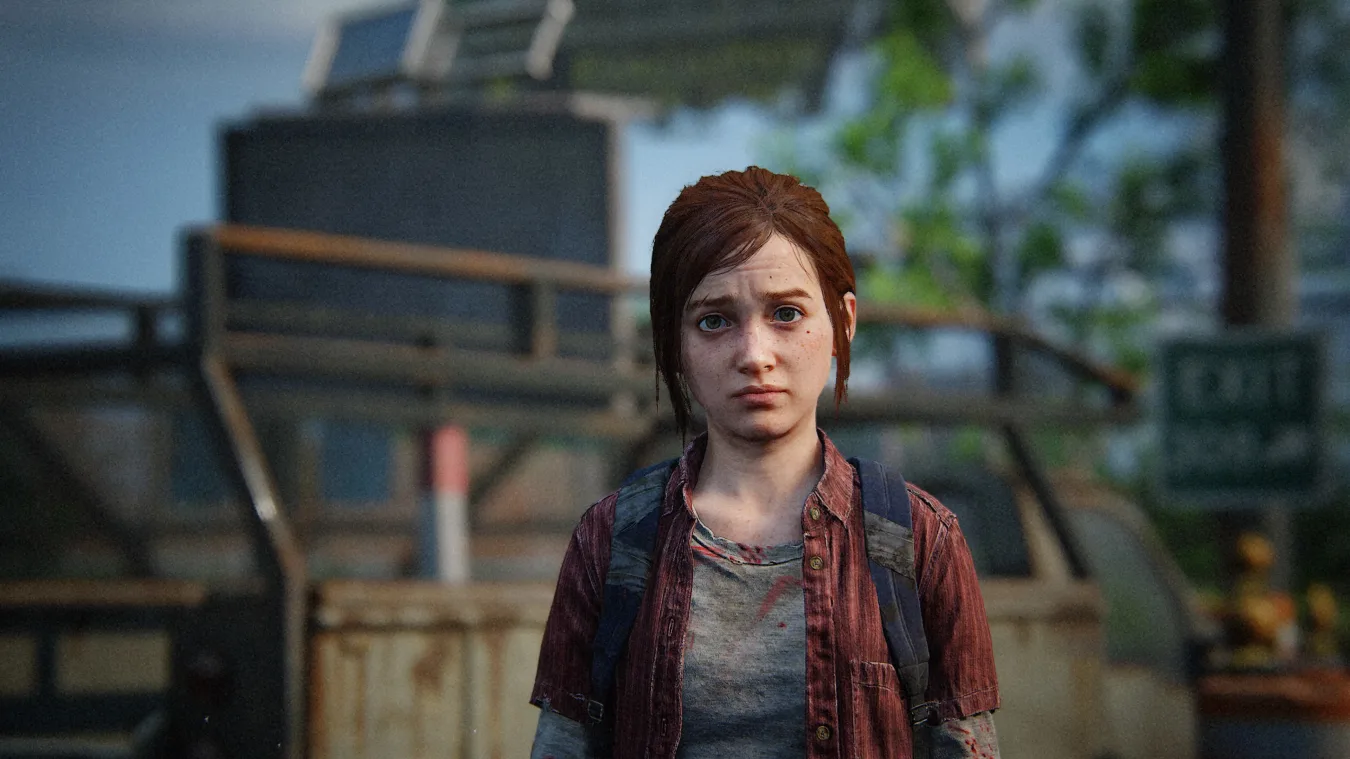
Characters’ facial animations look amazing, regardless of whether it’s in a cutscene or during gameplay. While there are plenty of cinematics in The Last of Us Part I, there’s a ton of storytelling that happens through the gameplay itself. I always enjoyed spinning the camera around to focus on the characters’ faces during quieter times of conversation, and they’re impressively detailed and expressive, reflecting the feel of the scene in subtle but noticeable ways. Enemies look more realistic than ever, too, whether it’s the angry faces of a pack of human hunters or the disturbingly distorted expressions of the Infected.
The improved environmental detail Naughty Dog added to the world is just as significant. The original game was already a stunning depiction of a post-apocalyptic United States, from the Quarantine Zones where humanity clung to safety, to abandoned towns overrun with Infected, or lush forests and roaring rivers of the wilds. All those settings are amplified in The Last of Us Part I, with better lighting, more realistic trees and vegetation, stunning reflections on water and loads of tiny details everywhere you look.
A great example of this is in the pinboard above Joel’s desk in his Texas house, which we briefly see in the prologue. I used the game’s photo mode to zoom in on the details and found numerous hand-written notes reminding Joel of his grocery list, his daughter’s soccer schedule, a cleaning schedule and even a letter his brother Tommy wrote when they were kids. Unless you go into photo mode and zoom in, you’ll never notice these details, but it helps build a world that feels lived in.
Throughout the game, you’ll come across certain areas like the subway under Boston and the Pittsburgh hotel basement that are shrouded with infectious spores and have little natural light. In the original game, those areas were particularly hard to see fine detail in — the spore particles overwhelmed the visuals and reduced the colors and visibility of the area to a shadowy gray mush. These types of environments look significantly better in Part I. The spores add an unsettling dimension, but the details shine through the fog. It’s also much easier to navigate, which is a welcome change — a lot of these darker areas involve going underwater to make your way around obstacles, and it was often hard to see a way forward.
Gallery: Comparison between ‘The Last of Us Remastered’ (PS4) and ‘The Last of Us Part I’ (PS5) | 12 Photos
Gallery: Comparison between ‘The Last of Us Remastered’ (PS4) and ‘The Last of Us Part I’ (PS5) | 12 Photos
The Last of Us Part I offers two visual modes: Fidelity runs the game at 30 fps in full 4K resolution, and Performance targets 60 fps while dynamically adjusting the resolution. (Alternatively, if you’re running the PS5 beta software that enabled 1440p as resolution setting, it’ll max out there.) I found myself jumping between the two modes, turning on Performance for battles and using Fidelity for quieter parts that were more focused on exploration. Overall, I prefer Performance mode, mostly because I find it hard to go back to 30 fps after playing at 60 for a while.
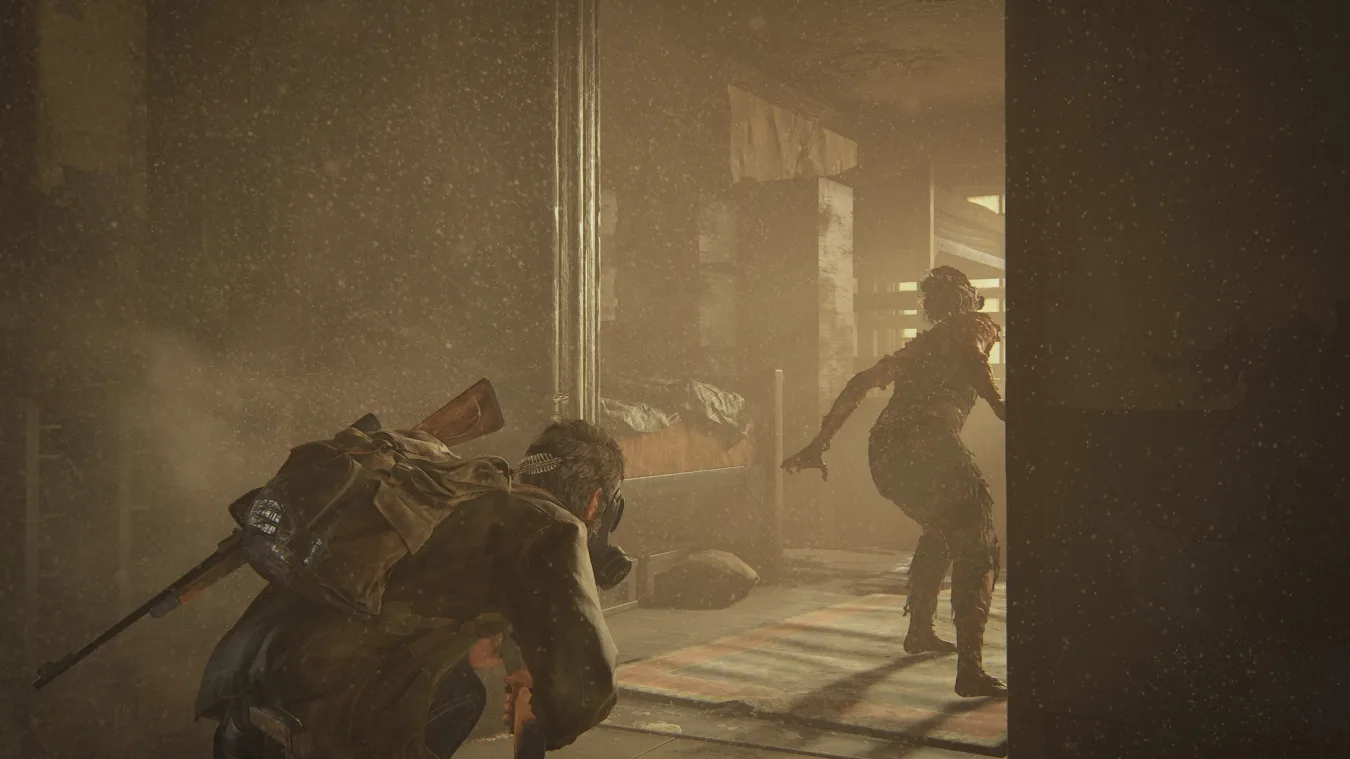
Gameplay tweaks and a new AI system
Improved graphics are table stakes for a remake, though. The big question around The Last of Us Part I was how much gameplay would change – whether we’d see new mechanics from Part II, or if the company would redesign levels to give experienced players something new.
Naughty Dog has been faithful to a fault. Level design is identical, and as best I can tell there are even the same number and placement of enemies throughout the world. If you know the general progression of The Last of Us and Left Behind (which remains a separate experience from the main game), you won’t find any surprises here. It’s revealing that Naughty Dog apparently had a chance to “do over” any parts of the game that it feels didn’t age as well and didn’t take them. A cynic would say they wanted to put less effort into the project, while an optimist would say they’re just standing by the original game’s design. I think both points of view are valid and will simply note that people who know the game inside and out aren’t going to find anything unexpected.
Similarly, Joel still moves like the burly middle-aged man that he is. You can’t dodge, and you can’t lay prone. You can now, however, pick up and throw bricks and bottles on the run, just as you can in Part II. There’s definitely something satisfying about running towards an Infected, stunning them with a brick throw and then finishing them off with a swing a melee weapon, but in the grand scheme of things it isn’t a major change.
One thing that is notably different is enemy AI. Human enemies are smarter and more aggressive, working together to flank you; they’re also a lot harder to lose once they pick up your trail. Infected, meanwhile, present their own set of challenges. Clickers, the blind Infected that use echolocation to find you and can kill you in one shot, have the same behavior they do in Part II. They’ll often stop their wandering and let out a series of “barks” — and if you’re near them when they do, well, you’re probably going to die quickly. In the original game, you were mostly safe as long as you didn’t make too much noise walking, but now you have to keep moving or hiding at all times.
The mega-powerful Bloaters are also modeled after their counterparts in Part II. The biggest change in their behavior is that they’ll build up a head of steam and charge at you like a bull — if you get out of the way they’ll often slam into a wall or other object and be stunned for a moment, a great opportunity to blast away at them with your shotgun. But in Part II, you can use the dodge button to dance out of the way. Since there’s no dodge in Part I, you have to sprint out of the way instead, something that’s not nearly as reliable. After getting so used to dodging the Bloater’s charge in Part II, it was a real pain to not have the same move here. And if a Bloater grabs you, it’s an instant death, so you’ll want to treat these upgraded enemies with the utmost care.
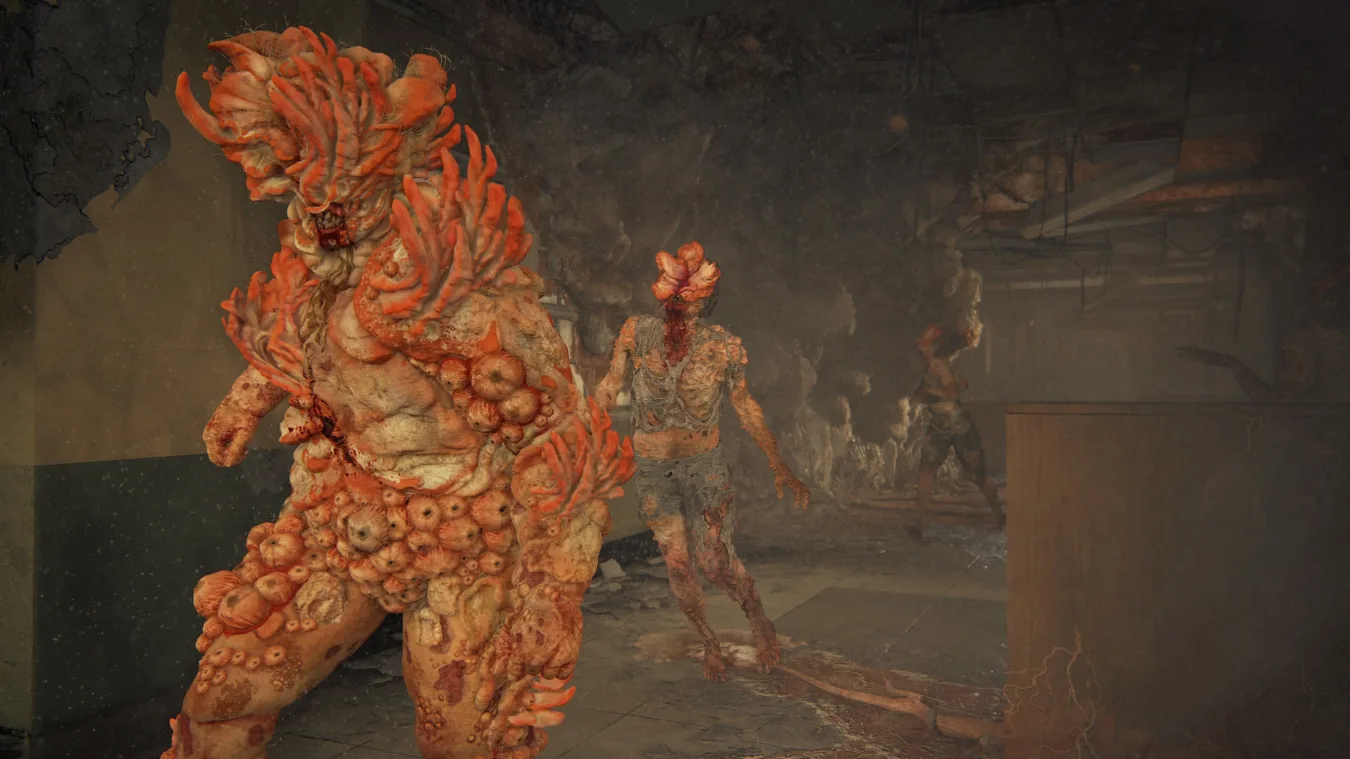
The AI and behavior of your allies has been upgraded, too, which addresses a big complaint about the original game. If you were in stealth, your allies were essentially invisible to enemies, which meant that your cover couldn’t get blown if Ellie or another companion ran out in front of a Clicker. This avoided the frustration of being seen when you didn’t actually do anything to reveal your position, but it also meant that it looked pretty ridiculous when characters could run right out in front of enemies and not get spotted.
Now, your companions are much smarter at mimicking your behavior, going into cover when you’re in stealth and only revealing themselves if you do the same. Once or twice in my playthrough, an ally would be “out of position” and in the enemy’s line of sight, but, as in the first game, they’re essentially invisible. The good news is that it just doesn’t happen very often. It’s not perfect, but it’s an improvement.

The haptic feedback system and adaptive triggers on the PS5’s DualSense controller also offer some subtle but noteworthy improvements to gameplay. Naughty Dog says each weapon has different resistance and feedback from the triggers, and the haptic vibrations are unique as well. While I can’t recognize every slight detail, shooting a revolver feels quite different on the trigger than shooting the shotgun or drawing your bow. Haptics accompany actions like reloading too, so you’ll feel a vibration for each pump of the shotgun after Joel takes a shot. There are too many haptic touches throughout the game to count, but one of my favorites is that you can “feel” rainfall as it vibrates lightly across the controller, like droplets are bouncing off your body.
Updates galore
While graphics and AI are the changes most people will notice first, there are a lot of smaller tweaks throughout that make The Last of Us Part I feel more like Part II. Things like a redesigned HUD and weapon selection interface, aiming reticles for different weapons and button prompts (like mashing square to open a blocked door or holding triangle to lift a gate) all match their counterparts in Part II. While weapon upgrade options are identical to those in the original game, the new visuals of Joel working on his guns with various tools are a lot more interesting than in the original game.
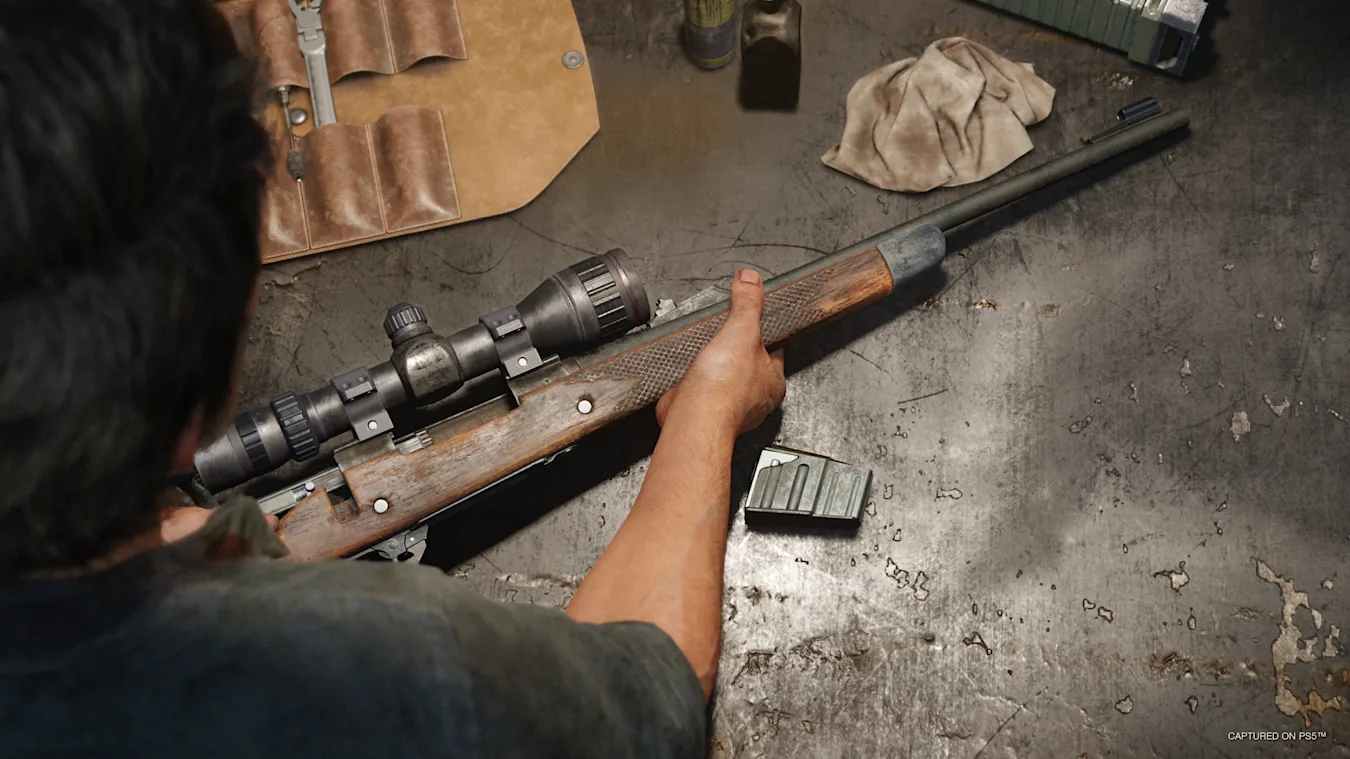
Sony / Naughty Dog
Upon finishing the game, you’ll unlock a host of bonus material and gameplay modifiers. Most significant are the Permadeath and Speed Run modes. Just as in Part II, Permadeath removes all checkpoints, and if you set it to the most difficult level, one death sends you back to the very beginning of the game. For those who want a significant challenge but aren’t quite that dedicated, you can do Permadeath “per act” (which Naughty Dog estimates encompasses two to three hours of gameplay) or “per chapter,” which adds some checkpoints within each act. You can also try it at any difficulty level, which makes the challenge a lot more accessible. I know I’m not good enough to try a truly obscene Permadeath run on the ultra-difficult Grounded difficulty, but I have kicked off a run on Hard, which I should have a prayer of surviving.
Speedrun mode is pretty self-explanatory, but it’s a nice quality of life enhancement for people who like to play games as quickly as possible. It enables an in-game timer that automatically pauses during cinematic and scene transitions. Once you finish the game, you’ll find a recap that breaks down your speed per chapter as well as your total play time, and the game saves records broken down by difficulty level and permadeath setting.
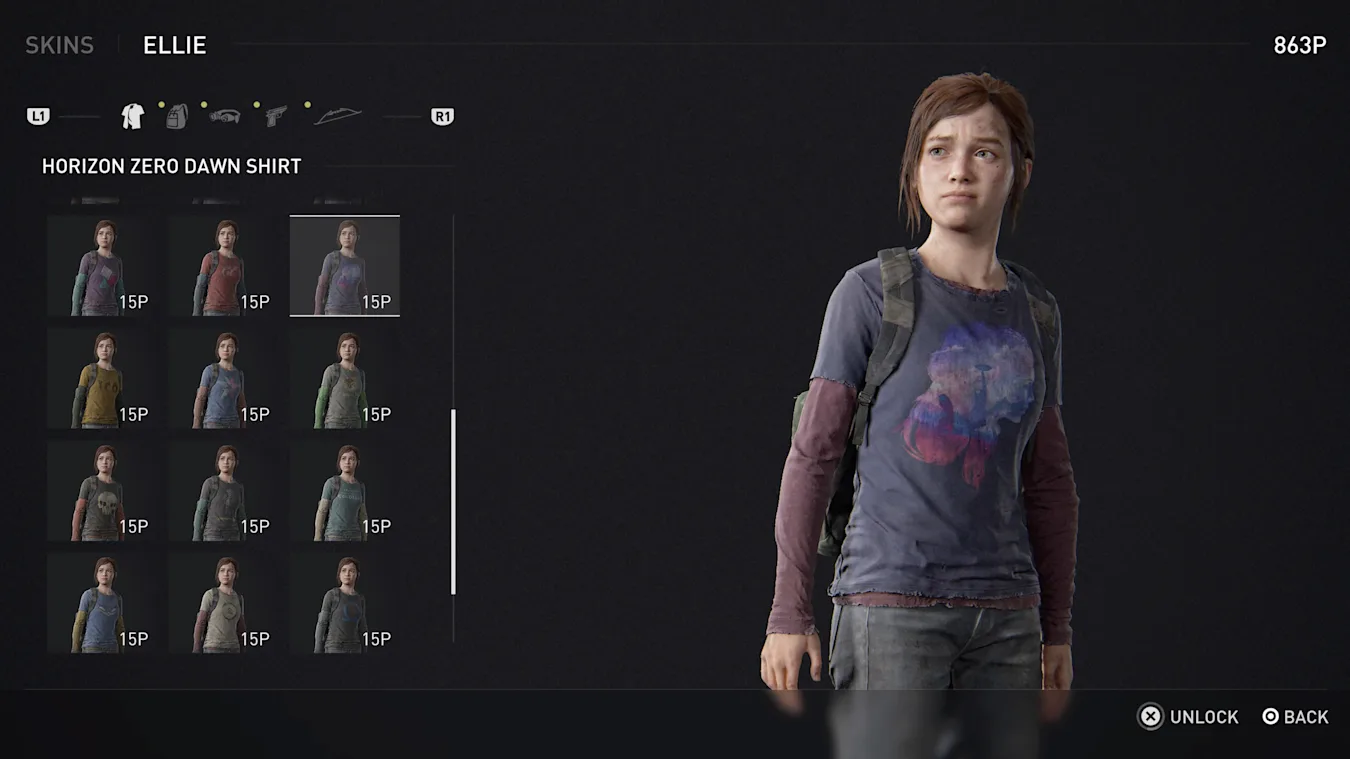
Other unlockable extras include tons of concept art, both from the original release and new art done for this 2022 rerelease. There’s also a viewer that lets you explore highly detailed character models for just about everyone in the game; it also lets you see the disgusting details of the Infected in close range if you’re into that sort of thing. More Part II extras brought over here include a set of filters you can apply to tweak the visuals of the game (think an 8-bit setting or one that renders the game in a comic book style) and a bunch of gameplay modifiers. You can turn on infinite ammo or crafting supplies, one-shot kills, slow motion, explosive arrows and much more. Only hardcore fans are probably going to spend time with these, but they can add some fun new ways to play the game — combining something like unlimited ammo with a permadeath setting on the game’s hardest difficulty would be a particularly unique challenge, for example.
It’s not a stretch to say that The Last of Us Part II helped push accessibility in the video games industry forward — Naughty Dog provided players with an extensive and impressive selection of options, and I’m very glad to see that the company replicated that with Part I. Setting include a host of control adjustments (including complete control remapping), visual aids like magnification and high contrast modes, features that make navigating the world easier like a ledge guard to keep you from falling to your death, a text-to-speech reader, audio cues, extensive combat modifications and much more.
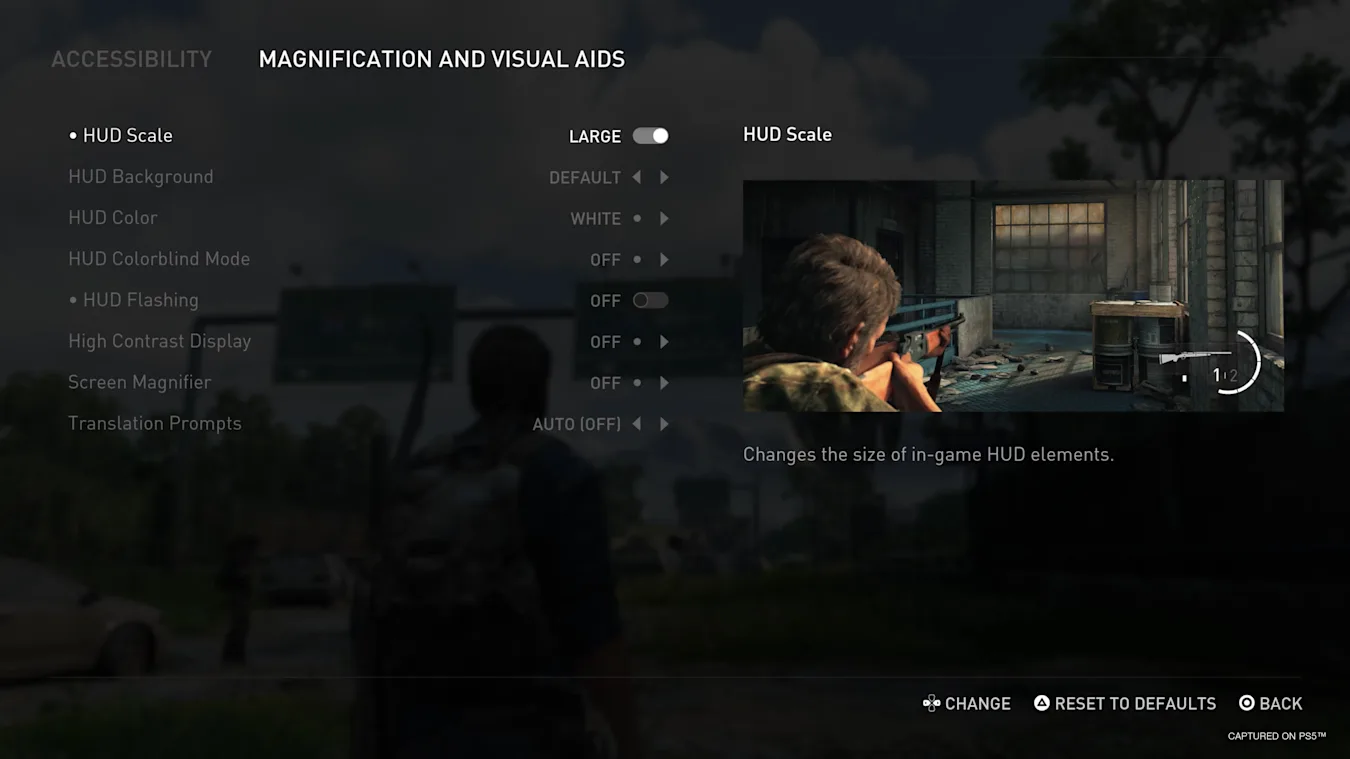
Sony / Naughty Dog
It’s all present in Part I, along with a new feature that delivers haptic feedback on the controller to help deaf or hard-of-hearing players feel the emphasis in how lines of dialog are delivered. The game also includes audio descriptions for cutscenes, something that wasn’t present in Part II. All these accessibility modifications are important additions and things that any player can appreciate if they want to customize their experience with the game.
At a more basic level, Part I also lets you set a custom difficulty level. There are six options, but you can also set different challenges across five parts of the game: player, enemies, allies, stealth and resources. So you could make it a little easier to stay in stealth, or make resources more plentiful while otherwise keeping enemy aggressiveness high, for example. It’s yet another way to tweak your experience to match your skill level.
I’d be remiss if I didn’t mention that virtual photographers will love Photo Mode in The Last of Us Part I. It’s even better than it is in Part II thanks to the addition of three lights that you can place anywhere around a scene to make things even more dramatic. You can adjust the color temperatures, brightness, position and many more options to customize the scene further than ever before. I can’t wait to see what the incredibly skilled virtual photography community around these games does with Part I. (All screenshots in this review, with the exception of those credited to Sony, were taken by me using the game’s Photo Mode.)